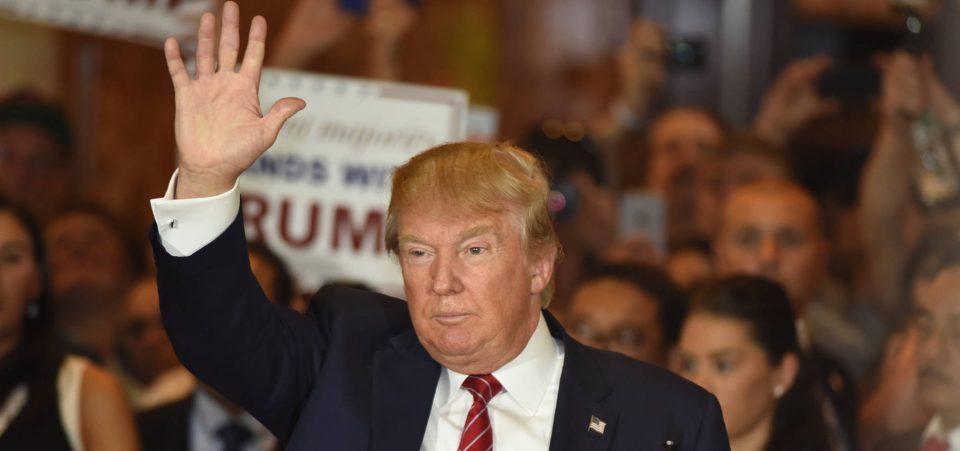Overvalued Stocks Continue to Soar on Trump Victory
During Donald Trump’s run for the White House, the vast majority of economists predicted stocks would tank if he actually won the election. Which, to be fair, wasn’t a total stretch. He might be charismatic and rich, but Trump’s business track record is a little dodgy.
Citibank predicted a Trump victory would send the markets down by three to five percent. PBS NewHour’s predictions were more dire, forecasting a 10% drop.
Fears of “Trumpageddon” were erased on November 9 when already seriously overvalued stocks—even after posting eight consecutive days of declines—soared, with the Dow Jones Industrial Average (DJIA) hitting a new intra-day high of 18.650.06.
On day two after Trump won the U.S. election, the DJIA surged even higher, hitting a new intra-day high of 18,873.66 and closing at a record 18,807.88. That represents a two-day gain of 2.7%. Since the start of the week, the Dow Jones has risen 4.5%.
Gains on the S&P 500 have been just as (unexpectedly) impressive. Since Trump won the election, the S&P 500 has advanced roughly 2.5%, hitting an intra-day high of 2,182.30 on Thursday, before closing at 2,167.48.
Investors may feel uncertain about the economic policies of a Trump presidency, but they seem to be erring on the side of exuberance.
Part of that unbridled enthusiasm is coming from a better-than-expected third quarter earnings season. So far, 85% of S&P 500 companies have reported earnings with a blended earnings growth rate of 2.7%. (Source: “Earnings Insight,” FactSet Research Systems Inc., November 4, 2016.)
If the index reports growth of any sort whatsoever in the third quarter, it will be the first time the index has seen year-over-year growth since the first quarter of 2015, putting to end the longest earnings recession on record.
To put that into perspective, on September 30, the estimated earnings decline for the third quarter was -2.2%.
Soaring Stocks Now Even More Overvalued
Even before Trump won the election, a whole two days ago, analysts were pretty much in agreement that the stock market was overvalued. Most won’t say by how much, but valuations certainly seem frothy.
Over the last number of years, investors have chosen to ignore weak fundamentals and instead, have focused on artificially low interest rates. This leads to complacency and, in some cases, irrationality. And perhaps we’re seeing this a little bit following the election.
Artificially low interest rates will eventually disappear, and the fuel that has been sending stocks higher will be gone. All that’s left for investors to base stock valuations on will be earnings. Even if the earnings recession ends in the third quarter, they haven’t been anything to cheer about in a long, long time. Stocks will still be sorely overvalued and have a long way to fall.
Three key indicators illustrate just how overvalued U.S. stocks really are.
According to the Case Shiller cyclically adjusted price-to-earnings (CAPE) ratio, the S&P 500 is overvalued by 83! The 10 year average for the S&P 500 is 15 and today, the Case Shiller ratio is at 27.5. That means that for every $1.00 in earnings, an investor is willing to pay $27.50. The ratio has only been higher three times, in 1929, 2000, and 2007. (Source: “Case Shiller P/E Ratio,’ Yale, last accessed November 9, 2016.)
The second indicator pointing to an overvalued stock market is the market cap to GDP ratio. It’s been called the Warren Buffett indicator, since he calls it the single best measure of where valuations stand at any given moment.
This ratio, as the name implies, compares the total price of all publicly traded companies to GDP. It’s a good measure since there should be some relation between a country’s economic output and corporate earnings.
A reading of 100% suggests U.S. stocks are fairly valued. The higher the ratio over 100%, the more overvalued the stock market. The market cap to GDP ratio is currently at 124.9%. The Warren Buffett indicator has only been higher twice since 1950. In 1999 it came in at 153.6%. In late 2015, it was at 129.7%. It was only at 108% before the 2008 financial crisis.
Finally, the Wilshire 5000 to GDP is a market cap weighted index of all stocks actively traded in the U.S. Instead of 5000 though, the index contains around 3,700 components. This ratio is at an all-time high of 139.2%. (Source: Stlouisfed.org, last accessed November 10, 2016.)
I’m not sure how long the Trump bump will continue…but eventually, it will be buyer beware.






